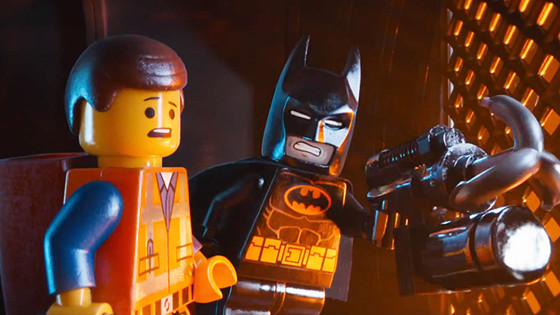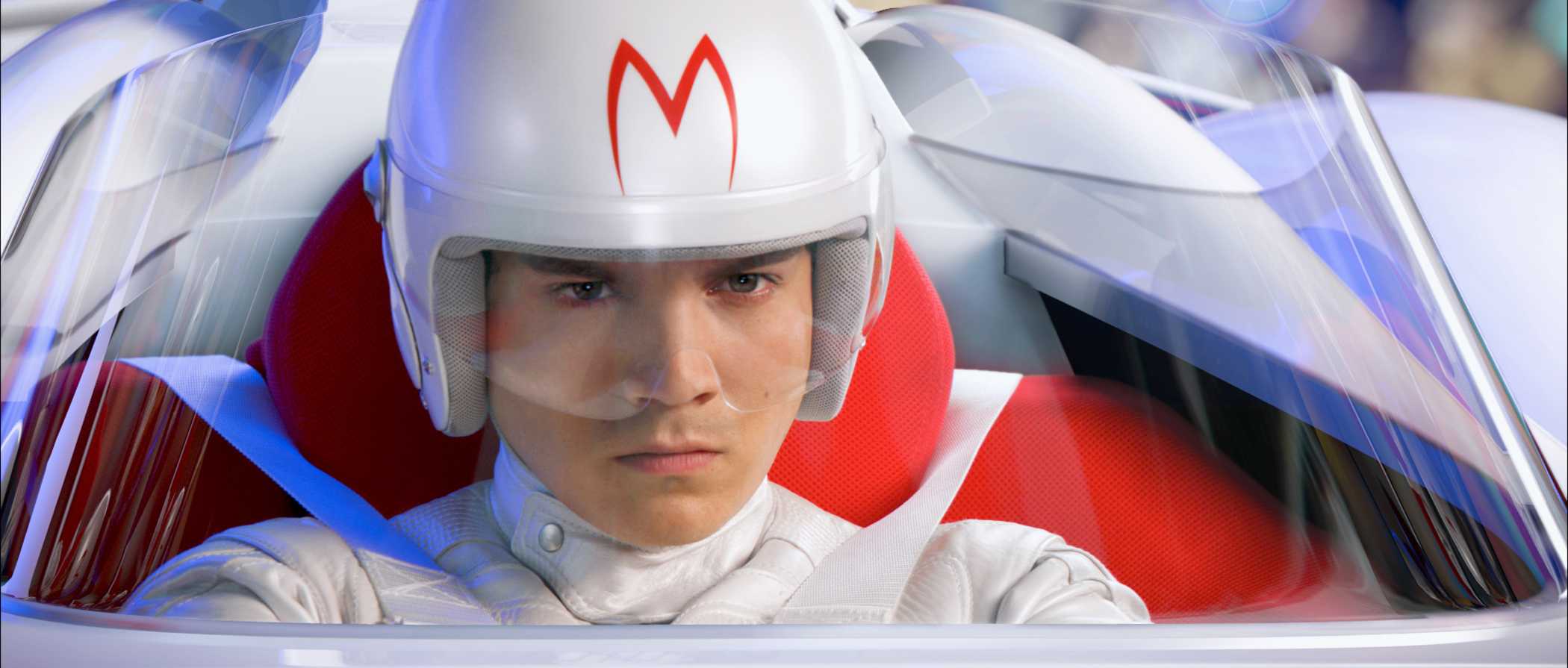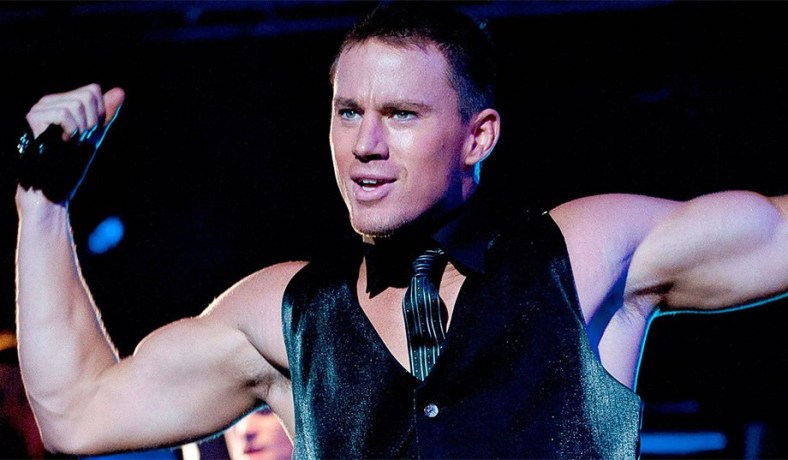6. Spring Breakers (dir. Harmony Korine, 2012)

What we expected: enough T&A to sprain the wrists of high-fiving fraternities unable to finance a March rendezvous to warmer climates
What we got: an arthouse fantasy of American culture painting an unsubtle portrait of nothingness to counter Malick’s poetic explorations of everything
It may be a bit of a stretch to refer to Harmony Korine – the man who brought us Trash Humpers, Julien Donkey-Boy, and some of the most uncomfortable Letterman banter of all time – as a mature director, but there’s a certain grace evident in most of his work dating back to Gummo.
For the majority of sane moviegoers unfamiliar with his movies, Spring Breakers likely came as a disappointment, as the excessive-to-the-point-of-nauseating establishing shots of hardcore partying provide the only linkage to the frat boy filmography of post-vacation National Lampoon.
Instead, Breakers illuminated the screen with the impossible neons of Michael Mann, the wispy dialogue and editing of Terrence Malick, and a sense of deadpan humor on par with a Mike Judge script.
Yet viewers conscious of Korine’s impish behavior were likely just as surprised by the movie’s respectful handling of such a noxious subculture, maintaining the director’s verite style despite his shift in subject matter. What very well could have been a spectacle of funny-because-it’s-true satire Korine treats as a fascinating documentation of pop nihilism minus any judgment or condemnation.
Devoid of a single shred of meaningful dialogue, Spring Breakers is a meditation on a culture at odds with meditation, employing the specific medium of a Malickian screenplay to tell the story of characters fundamentally at odds with a Malickian protagonist. While this choice to take the middle ground between two extremes may have alienated both potential audiences, the movie will likely have a long shelf life as the sole testament to the artistry of dubstep aesthetics.
7. The Lego Movie (dir. Phil Lord & Chris Miller, 2014)

What we expected: a run-of-the-mill kids’ fare oversaturated with flashy colors and corresponding pop music, specifically employing a beloved brand of toys to sell tickets
What we got: a desperate plea to fathers to stop taking playtime so seriously
For an audience of Lego purists, the concept of a movie broadly encompassing the brand’s entire scope of disparately-themed sets is equivalent to the moviegoer’s displeasure at watching Martin Lawrence anachronistically parading a bright green football jersey around fourteenth century England.
The nostalgia of engaging with individual Lego sets and consequently building a unique world around the perceived setting and color spectrum of the pieces is quickly dissipated by the orgiastic intermingling of construction workers, wizards, and Shaquille O’Neal in The Lego Movie.
But what initially comes off as blatant disregard for the unwritten rules of Lego-play ultimately proves the movie’s foremost purpose, which is to remind the rational adults among us to dismiss our default state of stiff logic and dive into the boundless imaginative realm of childhood.
By the time the animated movie reveals its relationship to reality, its confluence of characters is effectively justified, leading to an emotional confrontation within its grown audience: are we the uptight Man Upstairs misreading leisurely cues as an extension of our perfectionist career drive? Is this cognitive folly perpetuated by a society constructed upon dog whistle repetition as suggested by the movie’s thought-reducing earworm theme, which curiously resembles a certain Billboard-topping, elation-driven single from the previous year?
While the kids gleefully recreate Chris Pratt’s guileless intonation in the back seat, mom and dad likely stew in silence on the drive home as they individually consider for the first time since initiating their domestic routine exactly why they’re clapping along.
8. Speed Racer (dir. the Wachowskis, 2008)

What we expected: an over-the-top and totally unnecessary children’s movie with frequent heavy-handed nods to parents weaned on the Japanese cartoon of origin
What we got: an over-the-top and totally obligatory middle finger to the corporatization of art, sports, and the family unit
For the Wachowskis’ directorial follow up to the Matrix trilogy, the duo took an unpredictable turn, helming Hollywood’s resuscitation of Japan’s retrospectively campy manga franchise conceived in the mid-1960s. Yet Speed Racer’s silver screen debut proved an unsubtle vehicle for the ventilation of the Wachowski siblings’ frustrations with the colonization of individuality by corporate greed, communicated through an equally-unsubtle visual verbiage.
After Speed’s warning to “get that weak shit off [his] track” two hours into an unrelenting barrage of seizure-inducing imagery, it’s easy to forget that what we’re watching is a reanimated children’s program and not a Tarantino revenge fantasy photographed by Benoît Debie.
This isn’t to say the movie doesn’t appeal to its PG target audience – the movie is rife with antics sure to distract kids unfamiliar with the obscure cartoon from the Racer family’s incomprehensible configuration. But the movie doesn’t condescend to its Spritle-aged viewers with yet another villain ambiguously determined to rule the world outside of an all-too-real corporate backdrop.
It snatches a topic of prevalent social concern from Disney’s kid gloves and puts it in the white leather driving mitts of an angsty teenager swearing off his childhood idols after learning they’ve all bought into the system, and in a finale nothing short of transcendent offers a new ideal of selfhood to be praised more for its inner qualities than for the affluent symbolism inherent in a well-earned cold jug of milk.
9. Magic Mike XXL (dir. Gregory Jacobs, 2015)

What we expected: a macho, raunchy sequel to an unexpectedly arty profile of male strippers
What we got: more of the same, only swapping a cohesive narrative for excessive dance scenes and more overt feminism
When purveyor-of-mainstream-artistry Steven Soderbergh handed off the Magic Mike saga’s immoderately-phallic torch to executive producer Gregory Jacobs to direct XXL, it was unclear as to whether the follow-up would adhere to Soderbergh’s famous “one for me, one for them (but actually also kind of for me)” filmmaking procedure and package another well-meaning biopic as a racy popcorn flick.
Where the first film fell short of the mainstream’s expectations (thanks in part to an unresolved script, light existentialism, and the director’s jaundiced cinematography), the recruitment of an unestablished figure to helm the project suggested a significant change of pace following a production steeped in Soderberghian wit.
Though XXL did prove a change of pace, the resulting sequel likely offered less satisfaction to an audience dependent upon narrative cohesion and Hollywood misogyny to meet the price of admission. As the plot ambles along, we get to know the titular Magician’s surrounding cast of characters and the reason behind their passion for performance, which, as it turns out, isn’t so much a lust for cash as it is a respect for women.
The movie’s basis for failing the Bechdel test isn’t the typical positioning of women as an extension of man, but is instead due to the female’s role as partner in an egalitarian dialogue on sexuality and the double standards imposed on aging women.
Perhaps best summed up in a striptease by ex-NFL defensive end Michael Strahan, XXL represents an overt vulnerability expressed by those traditionally perceived as prominent figures of masculine activity in hopes that the movie’s misguided audience will walk away with an amended vision of the exemplary male ego.
10. Mad Max: Fury Road (dir. George Miller, 2015)

What we expected: an extension of the campy Ozploitation established in the series’ first three installments celebrating the advancements in special effects over the past 30 years
What we got: the first action movie to obliterate any trace of non-biological gender roles the genre has depended upon since its inception
While sitting through previews prior to a screening of the latest Mad Max installment, it becomes clear why the long-forgotten action series has suddenly been revitalized: trailers for Jurassic World, Mission Impossible Rogue Nation, and Star Wars: The Force Awaken attest to the undying potential an action franchise carries regardless of how much the series has aged.
Each of these blockbusters offer the temptation of recreating the nostalgic universe of previous episodes while injecting new life into them with more believable dinosaurs and increasingly impressive lightsaber duels, distracting us the from the utter unimportance of our return to a cut-and-dried narrative.
But Fury Road’s ulterior motives are based in a progressive view of contemporary action series, as the screenplay appears to be adapted from an extensive list of notes on the genre’s steady demise comprised by director George Miller over the long period since his last installment.
Dismissing the picture of all mouthy protagonists, submissive females, and referential tie-ins, Miller inadvertently graced us with the summer of 2015’s other landmark feminist statement: foreseeing a future in which the world has effectively stopped functioning, a universal struggle to survive has wiped away the specter of gender politics allowing women’s and men’s roles to finally achieve fluid interchangeability.
What’s equally impressive is the movie’s ability to shed much of the mythology established in its predecessors, acting more as a standalone accomplishment than a referential cog. Tom Hardy’s Max shares more in common with Buster Keaton than Mel Gibson, as his vehicle-hopping mute does little to slather the film in Aussie weirdness and humanizes his shortcomings when it comes to the shocking introduction of a second hero constantly watching Max’s back.
With the active participation of most of the cast in performing their own stunts, the influence of Hollywood is diminished by a relative shoestring mentality at odds with the cast’s familiarity to a mainstream American audience.
Author Bio: Mike LeSuer is a Chicago-based writer with a focus on music, media, and film, though he prefers the term “movies.” Little else is known about him.